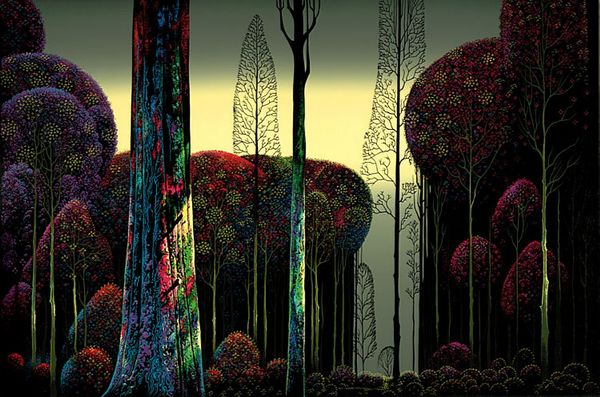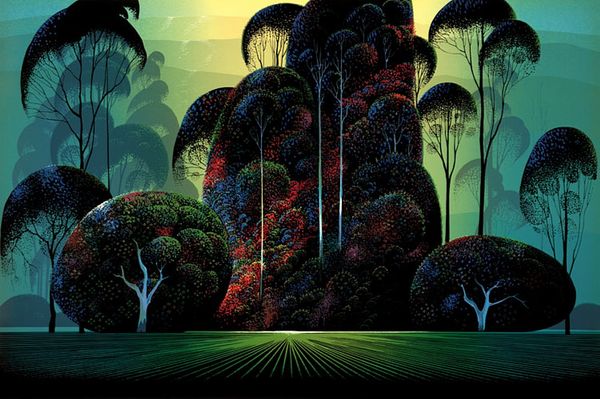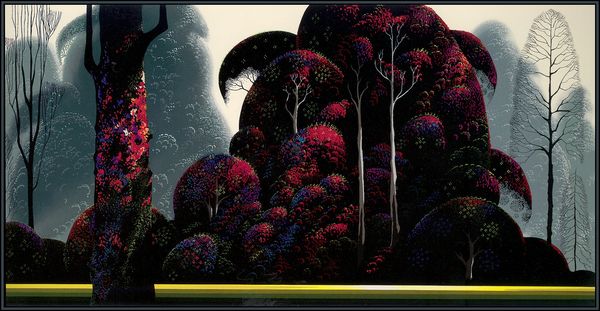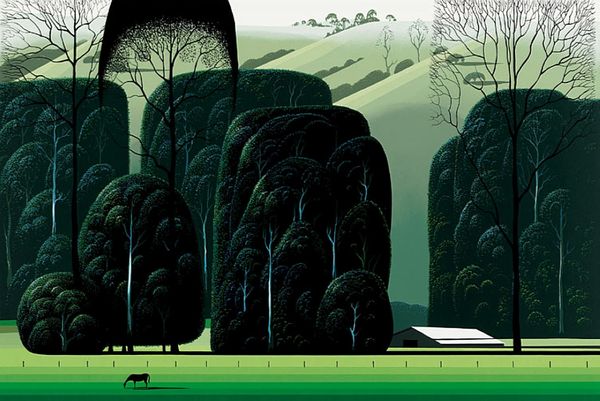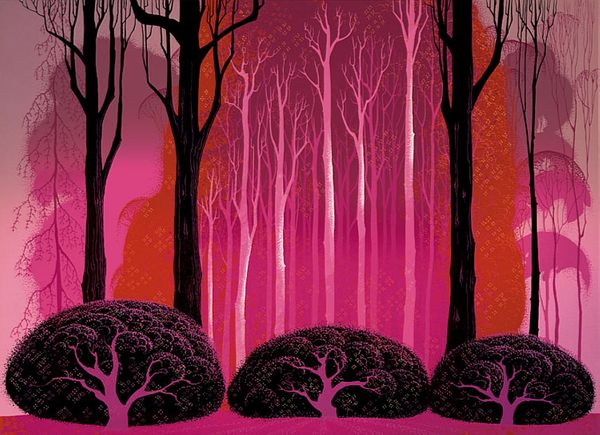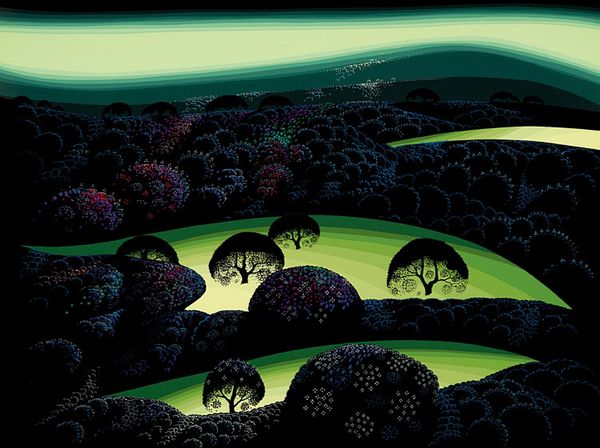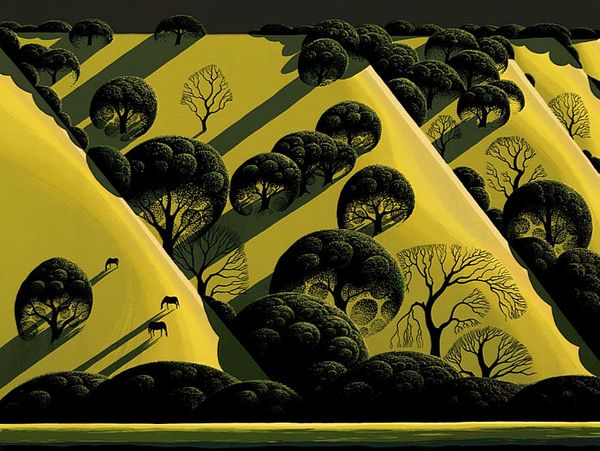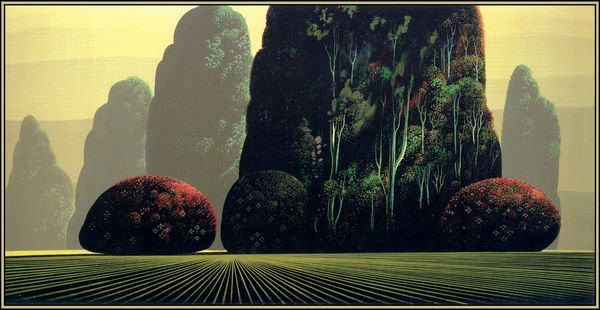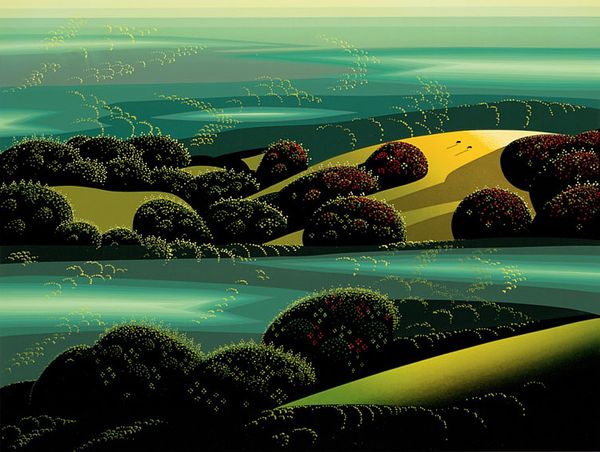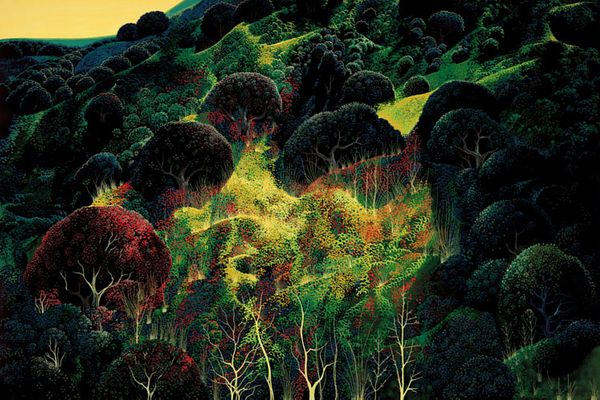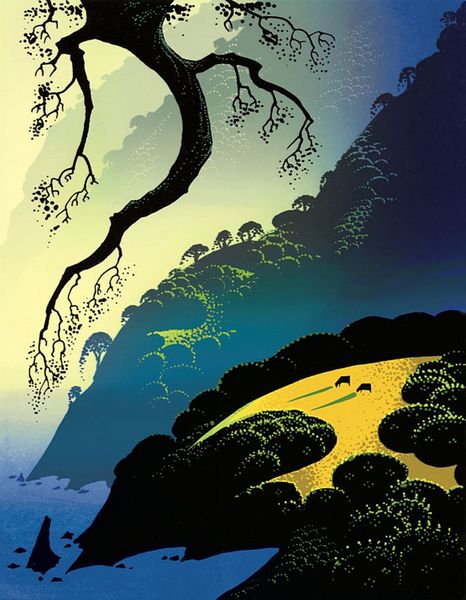
Copyright: Eyvind Earle,Fair Use
Curator: Well, look at this one: Eyvind Earle’s "Crimson Autumn" from 1994. He truly crafts these gorgeous landscapes! Editor: Wow, it's like stepping into a fairytale, isn't it? There's something so enchanting, yet slightly ominous about those looming shapes of trees against that muted sky. Like a beautifully illustrated page from a dark children's book. Curator: Earle did work for Disney! It seems fair to say his landscapes reflect that whimsical touch, even as he maintained a style of his own, drawing on American modernism. One way to look at this piece is that Earle combines symbolism and this very particular sense of stylized realism that invites viewers into a constructed space. What is it that we want a landscape to provide us? Earle knows we carry such desire into this space. Editor: You're right; those stylized shapes are definitely his signature. It’s interesting how he reduces natural forms into these simplified, almost geometric patterns. Does this abstraction perhaps reflect an anxiety regarding modern industrialization of our environment? Curator: Well, his landscape paintings certainly engage with a visual legacy of celebrating the American landscape, connecting to the Hudson River school, figures such as Thomas Cole and Asher B. Durand. Unlike that older tradition, Earle lived to see the dominance of car culture and modern industrialism so I am in agreement with that assessment. These forests can serve as commentary. His art does remind us to confront, maybe, how much nature is really at risk of becoming pure decor or ornament... Editor: Precisely. There's a quiet tension between the vibrancy of the crimson and the deep, almost melancholic greens. A celebration tinged with something less jubilant. Curator: Beautifully put. His approach—especially evident in that flat plane in the foreground with precise lines—pushes the traditional boundaries. It’s less about perfect replication and more about inviting an emotional interaction with the landscape as such, but through the perspective of his own memory, as well. It’s gorgeous how he can use this slightly abstracted impressionistic approach to almost trigger the sense of nostalgic desire itself, almost better than photographic approaches ever could. Editor: It does leave one wondering about their childhood imaginaries as shaped by cultural phenomena. Thinking about Earle and this piece leaves me contemplating that link between commercial arts and art. Curator: I quite concur, indeed, to understand and to be critical.
Comments
No comments
Be the first to comment and join the conversation on the ultimate creative platform.
